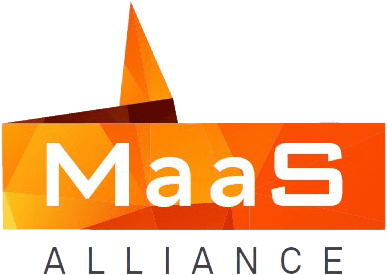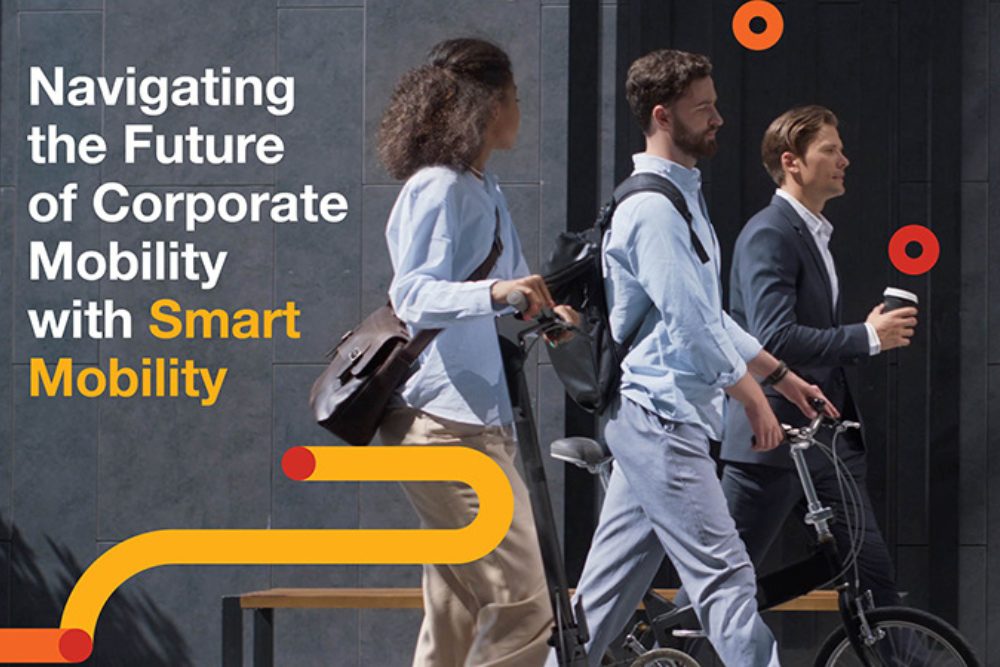
In November 2022, the World Resources Institute (WRI) launched the report – MaaS Guideline for Chinese Cities and Case Studies – to provide recommendations on how to develop MaaS under the framework of sustainable urban mobility strategy and further promote green, shared and inclusive mobility in the context of China’s carbon peak and carbon neutrality strategy.
“Mobility-as-a-Service (MaaS) is a new concept of mobility service that integrates various forms of transport services into one single platform, accessible on demand (MaaS Alliance, 2017). Through value-added services such as one-stop travel planning and payment, MaaS provides users with efficient, economical and low-carbon travel solutions. The main purpose of developing MaaS in cities is to meet users’ needs through integrated travel services and increase the proportion of green trips, thereby promoting the development of low-carbon sustainable transportation.

The report details the MaaS ecosystem and its values and challenges. It explains in the framework of sustainable urban mobility planning, how to make preparation and analyze the mobility situation, clarify strategies, develop measures, implement and monitor during MaaS process, as well as the specific implementation steps. At the same time, the report presents 10 MaaS practices in the world, summarizes their success factors and characteristics, then identifies the key elements of success. Finally, the report summarizes the implications of these cases for China and provides recommendations.
1. MaaS ecosystem
MaaS is a public-private partnership (PPP)-based travel service model. There are various stakeholders involved in the MaaS ecosystem, and their roles and responsibilities vary with different collaboration and business models. The main stakeholder of the ecosystem include: governments, MaaS operators, transport operators, financial institutions, ICT technology/data providers, flatform users, research institutions, etc.

Figure: How the MaaS system is integrated
In the MaaS ecosystem, the governments mainly coordinate other stakeholders under city or nation’s strategies and support a healthy environment for MaaS development. Transport providers refer to enterprises that provide mobility services, such as public transportation, metro, shared mobility companies. And MaaS operators need to integrate the resources of various transport providers to provide convenient and efficient integrated mobility services for MaaS users and help transport providers to expand their market and increase profits. Financial institutions can provide financial support for MaaS and promote cooperation among enterprises. Finally, MaaS also needs technical support from various technology providers for maps/navigation, big data, payments and other technical support to guarantee the operation of MaaS platform.
2. Values and challenges
The value of developing MaaS is that it can improve the efficiency and quality of users’ travel, encourage more people to choose green and low-carbon mobility modes, shape the public-transportation-centered mobility system, promote the digital transformation and open data system, and improve the stability and level-of service of the system. However, MaaS also faces some challenges when developing in Chinese cities. First, there is no single successful business model for all cities, and the operation models vary greatly in different places. How to find a suitable business model will be the key to develop a successful MaaS system. Second, the coordination among different stakeholders in MaaS ecosystem needs to be further improved. Finally, the establishment of a proper monitoring and governance system is also an important part of MaaS implementation process.
3. How to plan and implement MaaS

Figure: Steps to implement MaaS in the framework of Sustainable Urban Mobility Planning (SUMP)
By placing the implementation and development of MaaS in the framework of sustainable urban mobility planning, we can better leverage the benefits of the integration platform of MaaS and ensure that it is aligned with the city’s sustainable development strategy. At the same time it can avoid conflict of interest and waste of resources brought about by the complex business competitions. Referring to the ERTICO-ITS Europe report – MaaS and Sustainable Urban Mobility Planning –, successful MaaS planning and implementation requires the following four phases:
- Phase I: Preparation and Analysis. Jointly establish teams and working structures with each stakeholder; define the overall MaaS planning framework; analyze the basic mobility situation; develop work plans and timelines.
- Phase 2: Strategy development. Based on theprevious stage, construct and evaluate the future scenarios and make common vision of MaaS; set objectives and strategic targets for the MaaS implementations; and design evaluation indicators for MaaS.
- Phase 3: Measure planning. Based on MaaS strategy, set up detailed implementation measures and programs; discuss measures with related stakeholders and reach consensus; establish implementation programs and responsibilities of each stakeholder.
- Phase 4: Implementation and Monitoring. The implementationphase includes procurement steps and coordinating the actions of all stakeholders; monitoring the progress of the project and making adjustments; analyzing the successes and failures of the phase, finding solutions, and preparing for the next phase.
4. Elements of success
We have also analyzed and summarized 10 MaaS cases around the world (including cases from Helsinki, Japan, Beijing, Singapore, Guangzhou, Los Angeles, Sweden, Netherlands, Sydney, Antwerp) and extracted the key elements of success.
- Vision and Goals: Theprimary factor in the success of MaaS is that the key stakeholders need to have a clear vision and a common goals of the implementation strategy. It is important that the vision and goals are consistent with the overall strategy of the local government (e.g., sustainable mobility).
- Business and management model: There is no defined business model, however prior consensus on the cooperation model between the stakeholders is a necessary element. At the same time, it is important to find the right business model based on the local policy and investment environment, mobility culture, etc., in order to ensure the commercial sustainability.
- Data sharing: Data sharing and standardization is the key to the success of MaaS. Local governments (or influential companies) are needed to lead the way, work with participants to define and reach consensus on sharing standards and establish regulations, policies, and mechanisms to improve data sharing.
- Financing model: The public and private sectors should determine the proportion of investment and the role and choose a financing model that is conducive to the implementation of MaaS to achieve the desired goals and ensure the direction of development and the commercial sustainability.
- Fares and market positioning: Target customer groups and the fare rates need to be jointly negotiated among ecosystem stakeholders. Government need to revise the subsidy mechanism in order to make the MaaS system inlucde green mobility, cover low-income groups, and cover the areas with less accessibility to public services. And make reasonable pricing for MaaS plan/package to attract more users.
- Policies/Regulations/Standards: Thegovernment should provide a proper environment for the development of MaaS by formulating technical standards, regulations and policies, then ensure a healthy MaaS ecosystem in the early stage.
5. Insights and recommendations for China
Developing a low-carbon and inclusive MaaS strategy
MaaS development should be coordinated with nation’s (or city’s) overall sustainable development strategy, giving the priority to low-carbon and inclusive mobility. MaaS system in China should establish the services that focus on public transport system and appropriately limit the reliance on private car; improving the inclusiveness and equality
of MaaS to make it more accessible to vulnerable groups.
Cultivating MaaS ecosystems for local context
All stakeholders in MaaS ecosystem are encouraged to establish an Alliance. The Alliance can be led by local government or influential companies, with clear role and responsibility of each member to promote the development of the new mobility market and the MaaS ecosystem.
Seeking for diversified financing methods and finance innovation
Government-funded MaaS projects can encourage users to choose green modes (e.g., bus, shared bike) and help start-ups establish profitable models. At the same time, it is also recommended to use carbon market and other methods to encourage financial innovation and promote commercial and financial institutions to engage in green mobility and carbon inclusion mechanisms thus empowering the development of green and sustainable MaaS.
Establishing legislation and data-sharing regulations
Legislation and policy making can focus on data sharing and deregulation in order to remove collaboration barriers among stakeholders in MaaS ecosystem. Government and other MaaS stakeholders should be actively involved in the process of policies and standards making, providing recommendations for MaaS development.
Having MaaS pilots and challenges/championship, and conducting assessment
Government or the leading companies in MaaS ecosystem are recommended to carry out national or city level MaaS pilots or MaaS challenges/championship, which can promote the formation of ecosystem and attract investment. During and after the pilot, city need to evaluate MaaS impact through a combination of qualitative and quantitative assessments by third-party organizations to improve service level.
Developing customized services for different user groups and scenarios
MaaS services need to be adjusted under different local context. MaaS services in urban area might focus on travel intensity, while in rural on improving accessibility. MaaS providers are not necessarily limited to transport sector, and the users are not necessarily the individual travelers, B2B services for corporate users should also be considered. Local pilots can be promoted through influential community developers and commercial enterprises, thus improving its economic sustainability.
Source: World Resources Institute



